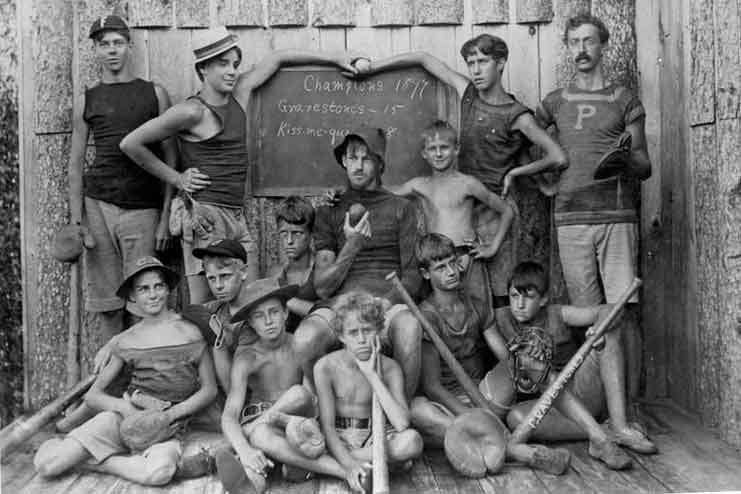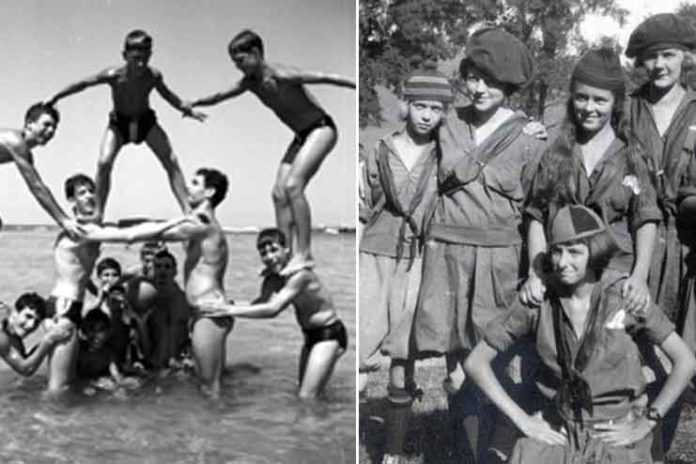Summer camps today, are the most looked up activities for children not just during summer months but also most often continuing all year round. The present day summer camp structure is a professional one with ultimate focus on providing skills to the children in addition to a lifetime experience where they begin to explore themselves and the world around. Moreover summer camps now offer an array of options to pick from; art, sport, fun, literary and everything else has become a part of summer camp training. More and more parents are getting involved in summer camps like never before. We all have heard from our parents and grandparents, about how mesmerizing their summer camp experience was. And despite the years that went by, summer camp memories stay fresh and live in all our minds and hearts. But what really is the history of summer camps in USA. How did it all begin and how were the yester-years summer camps like. Let us find out the legacy of present summer camps.
Summer camp history; from where it began and how it progressed:
According to reports, first summer camps were reported in the 1880’s when its was a chance for children to escape home and parental supervision. These first summer camps were all about staying off the urban modern life for sometime, and connecting with nature. A rich taste of adventure and nature was believed to be the essence of all summer camps then. These first camps were not that specialized as the ones today, it was more about idyllic rustic experience for the little campers.
The back to nature trend was the main guiding factor for yester years summer camps The summer camps were believed to provide respite from moral and physical degradation’s of the strictly urban life which kids were put into. Countryside living was preferred to help in relaxation and rejuvenation along with learning to stay away from urbane lives. Everyone who was a part of organizing committee for summer camps then, was aiming at providing modern childhood to kids with a taste of conventional basics.

Summer camps began with a handful before the early 20th century but by 1918 there were more than 1000 summer camps registered already. The basic idea deviated from natural living to more entertainment and fun based activities like TV, radio and sports. Eventually by 1930’s the camps were being criticized already for losing their whole idea behind coming up in the first place as activities and events took the space from natural habitat and nature to a more organized learning.
Slowly the summer camps changed from conventional appeal to a more civilized appeal to the camp setting. There was a new vision and a new purpose. They changed altogether from just retreats into nature to a more healthy societies of their own. Children would therefore learn to balance individual as well as group needs and become helpful and kind too.
The earliest ones were small and private camps for older boys, developed to help boys with tendencies and effects of over-civilization. Then began the camp building boom bringing this experience to wider audience including poor and middle class boys. The first boys camp of USA called the YMCA tended to work on the military encampments having sleeping tents on a parade ground where campers got wake-up signal for morning drill and taps to follow.
Camps for girls were established later in the early twentieth century to help foster a new empowered and self-reliant clan of young women. By 1925, there were around three hundred Girl Scout camps in the US.
Both boys and girls summer camps offered a range of activities including camp-craft like essential survival skills, life skills, nature study, manual training for art and craft, calisthenics, Sport activities. There were some interesting and popular camp games by now which included Rover, Indian and White Man and All Come Over where a group of campers named as Indians would try to capture other group of campers representing “white people travelling over the prairie.
The stunning evening campfire was set up for fun and entertainments, along with songs and storytelling, as well as some captivating rituals to make the camp experience a mesmerizing one.
Camps also began incorporating religious sentiments along for natural setting induced spirituality effectively. On Sundays, the camp routine was changed to a more religious one. With white-clad campers attending services in a forest chapel, amid rustic furniture and a stone altar, facing lake.This brought more religious camping into the summer schedules. Many organizations and local bodies started coming up with their summer camp schedules and this made spiritual lessons a part of kids lifestyle, specially the middle-class and elite families.
Just at the onset of World War II, US camping practices transformed as professional experts lent their advice to camp director. It was guided by psychologists that a unit plan was introduced along with elaborate sleeping quarters. Simultaneously the American Camping Association was formed in 1935 which divided the campers into age and interest based groups. There was an adequate socializing space which was mandatory for helping kids to interact openly. Safety standard began setting up and now it was more about supporting healthy and happy experience for kids.









